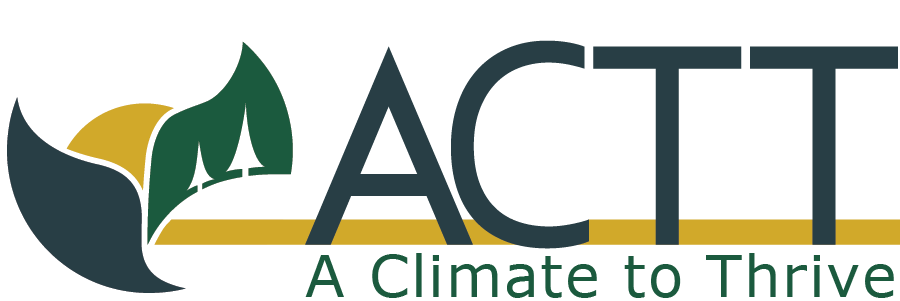Resources Index
Explore the worksheets, tools, and references that support the work in Sections 1, 2, and 3 of the toolkit.
Section 1: Getting Started
Bringing people together & first meetings
Platforms to build equity in meetings: Liberating Structures, Open Space World, World Cafe Method
ACTT’s facilitation guide for more resources about organizing and facilitating meetings
Pause & Reflect: Reflection to infuse Planning
Scan the Landscape: Be an Amplifier, Not a Duplicator Worksheet
Use this worksheet to map out current climate-related efforts in your community and explore where your group can plug in, support, or amplify what's already working. Starting with awareness helps align your energy with others for greater collective impact.
Setting a Thoughtful Foundation Worksheet
After your initial meetings, this worksheet offers space to slow down and reflect as a group. By considering your values, strengths, and the readiness of your community, you’ll shape a clearer sense of direction and ensure your next steps are intentional and aligned with what matters most.
Focus Worksheet
Use this worksheet to explore what matters most to your group and where your efforts can have the greatest impact. Defining a clear, shared focus early on will help guide your decisions, deepen your strategy, and keep your work grounded as it grows.
Scale Worksheet
Use this worksheet to explore what scale of action best fits your group’s capacity and vision, from hyper-local projects to broader advocacy efforts. Choosing a scale that feels grounded and doable helps your group stay focused, build momentum, and grow intentionally over time.
Build Your Core Team and Leadership Structure
Worksheet
Use this worksheet to identify potential team members, clarify needed roles, and shape how your group will share leadership and make decisions. Starting with people you know and planning intentionally helps you build a strong, balanced foundation for collaborative climate work.
Planning Result: Roadmap Worksheet
Bring everything together in one place: your group’s purpose, priorities, team structure, and project plans. This worksheet helps you move from reflection to action with a clear, organized roadmap to guide your first steps and sustain momentum.
Engagement with the broader community
Example promotional toolkit for sharing with outreach partners.
Section 2: Building Capacity for Action
Tools and Resources - Senator George J. Mitchell Center for Sustainability Solutions - University of Maine
Emergent Strategies Worksheet
This worksheet supports flexible, emergent strategy by guiding your group through regular reflection, learning, and adaptation. Use it to assess what’s working, respond to change, and adjust your direction while staying grounded in your purpose.
Strategic Reflection Worksheet
This worksheet guides you through key questions about your group’s work, vision, and priorities, helping you organize your thinking and prepare for deeper strategic planning. Whether you’re developing a full strategic plan or simply clarifying your focus, this worksheet will help you organize ideas, set initial goals, and start aligning your team for what’s next.
Community Mapping Template
Relationship Mapping
Section 3: Longevity
Longevity in organizational structure
Exemption Requirements - 501(c)(3) Organizations
Starting a Maine Nonprofit Checklist
Sustaining mental health and engagement
Resources to support sustained engagement in climate action - from ACTT’s Climate Ambassadors Program





